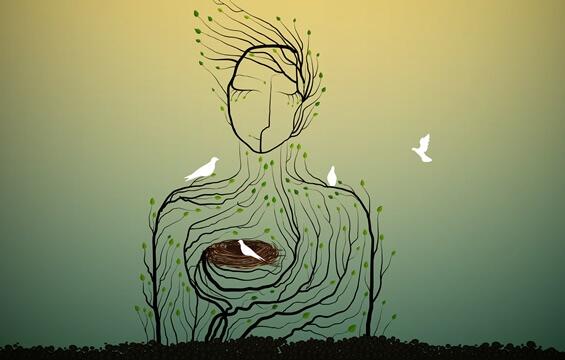One of the first questions we ask ourselves when we have a problem is: what should I do?, but they are not solved, because perhaps we should focus on being, not doing so.
At first it may seem a little abstract, but in reality it is a very concrete idea, some problems are not solved because the solution is not to take any concrete action to end them, what they need is a change, whether in concentration, attitude or an aspect of personality. That’s why people talk about being, not doing.
- “People often say they don’t know each other yet.
- But he?I? It’s not something you find.
- It’s something you create.
- ? – Thomas Szasz-.
Doing so becomes useless when the origin of a difficulty is in being. Think, for example, of someone who repeatedly tries to get your partner to pay more attention to you, often complains and wants to be respected. However, that doesn’t solve what’s happening. Perhaps the right thing to do is not to affirm (do), but to review what is behind your need for frustrated care (to be).
The first idea to point out is that many times we cannot define a problem or indicate what is really problematic, what often prevails is the desire to get rid of it, we see it exclusively as an inconvenience or threat that needs to be addressed as soon as possible. Possible.
This often leads us to hurry. At first the action, or reaction, is activated long before a reasonable analysis of the situation is completed, remaining inactive for a while is not an option for many, so it is said that we have reached a time that is not that of the human being, but that of “human doing”.
The most practical and material problems are usually solved by doing something, if the key is broken it has to be repaired, there is no need to reflect more, since it is a visible difficulty, which can be realized, and in relation to the protocols of action. already established. In the face of more abstract problems, the situation is different. That’s when it becomes important to be and not to do.
Everyone builds a special way to respond to problems, while some see it as a challenge that interests others, others see it as a risk that needs to be eliminated quickly, this is the first aspect in which being comes into play and it is not in being where a difficulty takes on a meaning, where an attitude towards it is forged.
Sometimes we earn a lot when we look at and evaluate our own attitude to a problem, would a more constructive idea help us solve it?What we did to fix it was effective or not, the first thing that comes to mind is to do the same thing that has been ineffective in the past?
Being, and not doing, means moving forward in these reflections and looking for approaches that include a look at what we feel and think, in the face of what is happening to us, it is very likely that the way we see the problem and the attitude we take before it will determine its extent or solution.
To be and not to do is to eliminate the automations in the face of difficulties, if someone attacks you perhaps the most reasonable thing is not to retaliate, if you fail in a task it may be better not to try to minimize or hide it. If things don’t work out for the couple, chances are the solution isn’t to blame each other.
It is good to try not to get carried away by our immediate beliefs, not to rush into trials or to deny or stray from problems, on the other hand, it may be advisable to observe the difficulty with the open mind, without judgments or prejudices that alter perception. Accept that there is a problem, without being full of anxiety. And move to understand what’s really going on and how we contribute to it.
In other words, if we balance our being and connect with ourselves before we act, we will probably be more successful on the way forward. Be it and don’t do it. Find out again before moving on to the next step: look inside us, not outside. Work on who we are to improve what we do.

